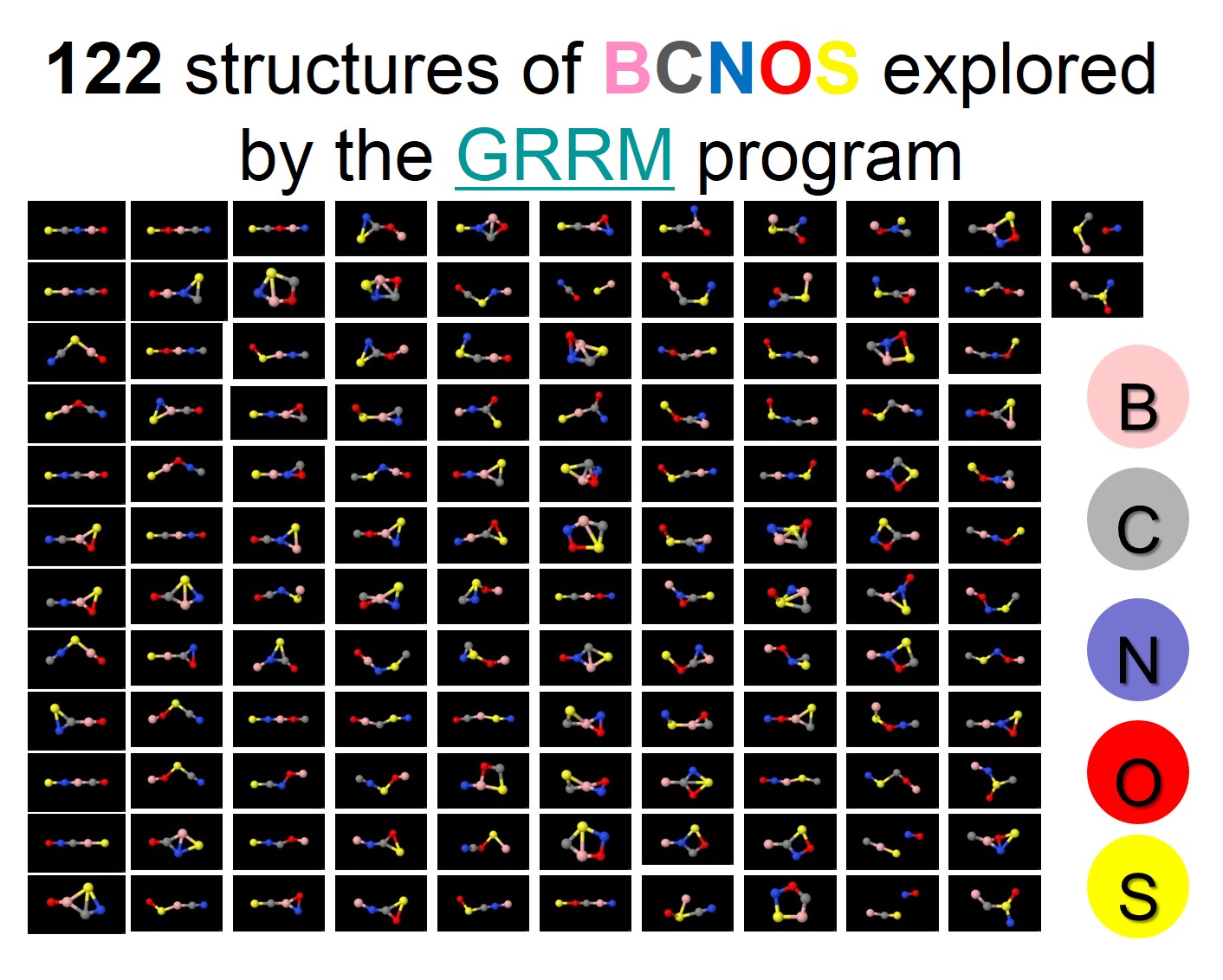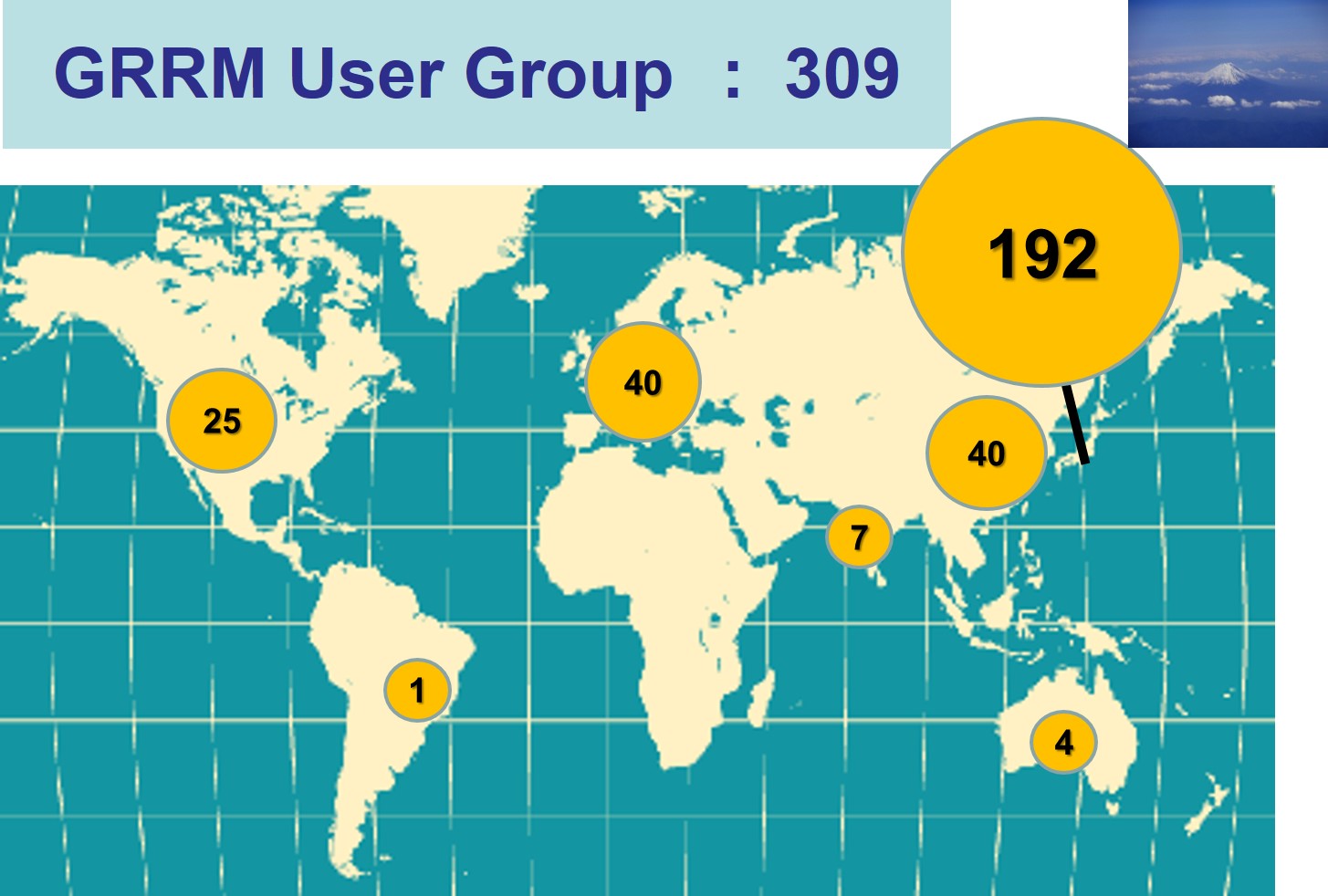GRRM Guide
[GRRM program]
GRRM program was born in 2003, and the following versions were released.
GRRM1.22 --- Application form of GRRM1.22 ---
GRRM11 --- Application form of GRRM11 for Academic users ---
GRRM14 --- Application form of GRRM14 for Academic users ---
GRRM17 --- Application entrance to GRRM17 for Academic users ----
(Concering GRRM17, visit AFIR Web Page: https://afir.sci.hokudai.ac.jp )
GRRM20 --- GRRM20 as a comercial product from HPC systems
Basic Spec of GRRM
GRRM is the first computer program based on the SHS(ADD) algorithm for an
automated exploration of chemical reaction pathways by utilizing energies
obtained from solutions of HΨ=EΨ.
GRRM copes with long standing fundamental problems in chemistry by automated
exploration of chemical reaction pathways.
o GRRM automatically explores unknown isomers.
o GRRM automatically explores unknown synthetic routes.
o GRRM automatically explores unknown dissociation channels.
GRRM develops an unexplored world of chemistry by elucidating unknown chemical
reaction networks.
o GRRM is useful for production of the Atlas for the chemical world.
o GRRM is useful for design of new chemical compounds and reactions.
o GRRM is useful for designing new tactics for energy/environment problems.
o GRRM is useful for elucidation of catalysis and design of new catalysts.
GRRM is an epoch-making program of potential analyses for the following problems.
o Normal coordinate analysis Normal coordinate calculations can be made at
arbitrary structures. Optionally, enthalpy and Gibbs energies can also be obtained.
o Optimization of equilibrium structures Equilibrium structures can be optimized
by SIRFO and BFGS methods.
o Optimization of transition structures Transition structures can be optimized by
SIRFO and Bofill’s methods.
o IRC search IRC can be traced by Page and McIver methods.
o GRRM search Global reaction route mapping (GRRM) can be made for the potential
surface of a given chemical formula. Starting from an equilibrium structure,
automated search of dissociation and isomerization can be performed to explore GRRM
corresponding to the Atlas of chemical reaction routes. Optionally, exploration of
reaction routes can be made for the limited region around a particular structure.
o One step TS search An efficient search of the reaction pathway connecting a
reactant and a product can be made to determine the transition structure (TS).
This procedure can be done automatically without initial guess, and this technique
is much more rapid and applicable than any other methods, such as the NEB method.
o Intermediate search Intermediates between a pair of isomers can be found, even
if they are far apart. The SHS method in the hypersphere-contraction-mode enables
us to explore multi-step reaction pathways, even if they amount to several tens of
steps.
Program Package & Requirement for GRRM
GRRM utilizes energies obtained by Gaussian03/09/16.
GRRM (64-bit version) can be used under a Linux/Unix environment.
The latest version of GRRM20 is avilable as a comercial product from HPC systems
Other versions of GRRM can be used for research and education, after application
to the following address by E-mail.
E-Mail: oh*nok@to*hoku.a*c.jp (remove * for real use)
Only selected researchers are allowed to use GRRM on conditions that they are
(1) active academic scientists,
(2) students, teatures, technicians (only for GRRM1.22),
(3) collaborators with the developers, or
(4) financial promoters to the developers or IQCE https://iqce.jp




